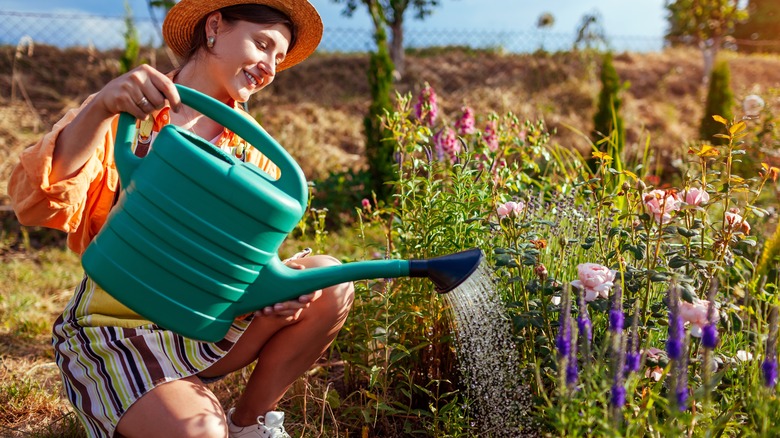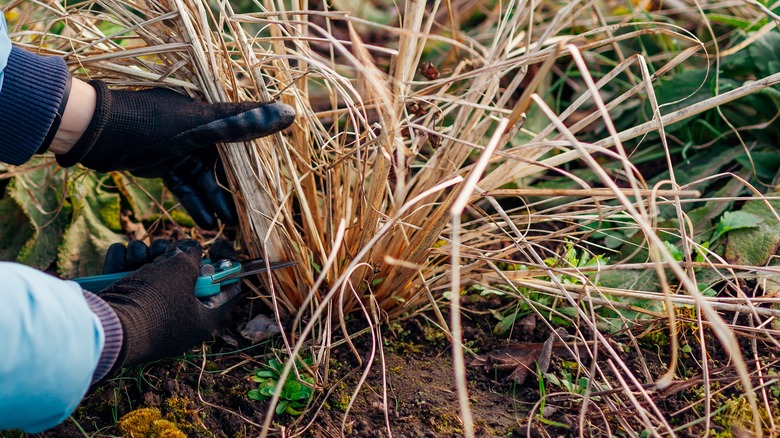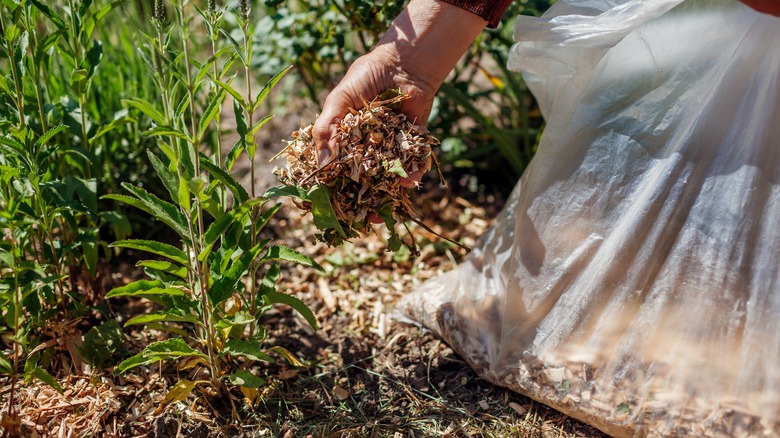Tips & Tricks To Keep Your Perennial Garden Looking Fresh In August
If you live in a relatively cool and temperate climate, summer can be one of the best seasons for gardening, but even the coolest gardens can feel a bit burnt out and drab come the end of summer. Most spring and summer-blooming flowers will have waned by August, if not withered completely in the sweltering summer heat. There are lots of garden tasks you shouldn't do if a heatwave is coming, but once August rolls around, how can you make your perennials look better and prepare for the cool seasons to come? In August, it's time to go out with the old and in with the new — yes, you can bring in some new features!
At the end of the summer season, clearing away old, dried-out, and dead foliage is a key place to start, but the shift in seasons also provides a good opportunity to carry out some other garden tasks. After all, there are plenty of perennial blooms that will emerge with the cool fall weather, and it's never too early to start planning ahead for next spring. Here's how you can help your perennial garden go from toasted and drab to healthy and fab just in time for early fall.
Trim out old growth and assess garden health
If you're wondering how to clean up your garden at the end of summer, deadheading old flowers is the first thing you can do to make your perennial bed look better. Grab a pair of hand pruners and separate dead, dried-out flower heads, snipping them at the base of the stem above any living foliage. If these flowers have gone to seed, consider collecting the seeds to plant or leave the seed heads for wildlife to forage. Spent daylilies can be cut down to about 3 inches above the soil, encouraging new green growth to sprout up in fall. Fall-flowering perennials like aster, goldenrod, and Boltonia are the exception to all this heavy pruning; you'll want them to be strong and healthy enough to flower in a month or two.
After cleaning up your old flowers, pull any weeds that have crept into your garden. By weeding in August you might be able to prevent some weeds from spreading or going to seed. Be sure to dig out the whole root of perennial weeds to remove the rhizomes. Lastly, assess your overall garden health by examining plants for powdery mildew, and removing and destroying any mildewed parts. Late summer is the best time to cut back on fertilizer so that plants have a chance to rein in their growth and settle down before winter. You can also test the soil in late August and amend it as needed.
Rearrange and refresh for the seasons ahead
If the weather is relatively mild where you live, there's quite a bit you can do to freshen up the space for fall and prepare for an abundant return next spring. In late August you can dig up and divide plants in your garden if you'd like, although some folks might advise waiting until September or October. Carefully divide any spring-blooming bulbs and replant them throughout your garden to enjoy fuller growth next year. You can also purchase and plant new spring-blooming perennial bulbs at this time, as they'll have plenty of time to settle and take root during the pleasant fall weather before things get too cold.
After cleaning up and rearranging your perennial garden as desired, take notice of any bare spots where the perennials didn't fill in as much as you'd hoped during their last bloom and add more perennials, some annuals, or a filler plant like an ornamental grass or evergreen shrub. To make your garden's summer color last well into fall, plant some sweet fall-blooming flowers like chrysanthemums. Finally, add a top dressing of mulch or compost to lock in moisture, give the garden a gentle nutrient boost, and protect against weeds.


